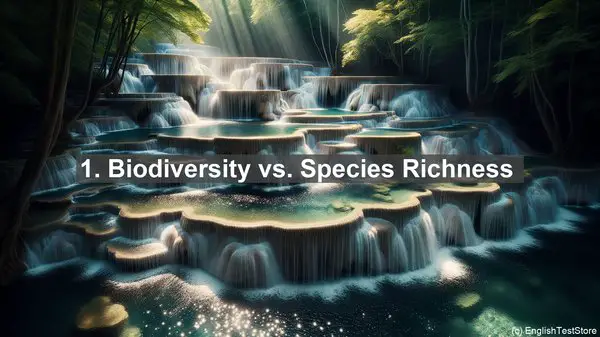Introduction
Welcome to today’s lesson on conservation biology. In this lesson, we’ll be discussing some commonly confused words in this field. Let’s dive in!
1. Biodiversity vs. Species Richness
While biodiversity refers to the variety of life forms in an ecosystem, species richness specifically measures the number of different species present. Biodiversity encompasses not only species richness but also genetic diversity and ecosystem diversity.
2. Endangered vs. Threatened
When we say a species is endangered, it means it is at a very high risk of extinction. On the other hand, a threatened species is one that is likely to become endangered in the near future if conservation measures are not taken.
3. Habitat vs. Niche
A habitat is the physical environment where a species lives, including the biotic and abiotic factors. A niche, on the other hand, refers to the role and resources a species requires within that habitat.
4. Keystone Species vs. Indicator Species
A keystone species has a disproportionately large impact on its ecosystem, often influencing the abundance and diversity of other species. An indicator species, on the other hand, is used as a measure of the overall health of an ecosystem.

5. Ex situ vs. In situ Conservation
Ex situ conservation involves the preservation of species outside their natural habitat, such as in zoos or botanical gardens. In situ conservation, on the other hand, focuses on protecting species within their natural habitats.
6. Poaching vs. Illegal Wildlife Trade
While poaching generally refers to the illegal hunting or capturing of wildlife, illegal wildlife trade encompasses a broader range of activities, including the buying and selling of wildlife and wildlife products.
7. Extinct vs. Extirpated
When a species is extinct, it means it no longer exists anywhere on Earth. Extirpated, on the other hand, refers to a species that is extinct in a particular geographic region but still exists elsewhere.
8. Ecosystem vs. Community
An ecosystem includes both the living (biotic) and non-living (abiotic) components of an environment, while a community refers specifically to the different species living and interacting within a particular area.
9. Restoration vs. Rehabilitation
Restoration involves returning an ecosystem to its original state, often after a disturbance. Rehabilitation, on the other hand, focuses on improving the condition of a degraded ecosystem without necessarily returning it to its original state.
10. Invasive vs. Native Species
An invasive species is one that is not native to a particular ecosystem and has the potential to cause harm to the environment, economy, or human health. Native species, on the other hand, naturally occur in a specific ecosystem.

